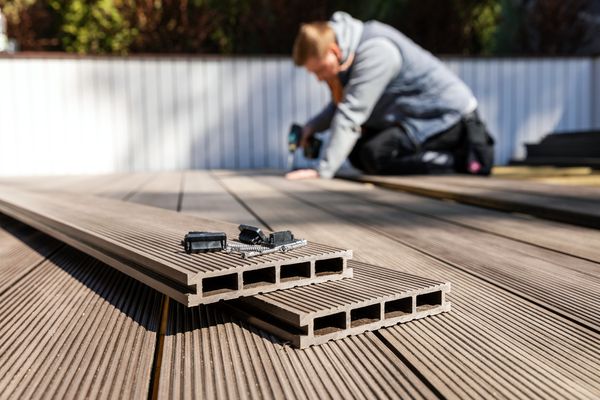It's often said that when it comes to earnings season, Mr. Market is looking forward. That was most certainly not the case when Trex (TREX +8.13%) reported earnings for the first quarter on May 5. Even though the company projected 27% sales growth for the second quarter and announced that its new, yet-unidentified product for a brand-new market would add to this year's earnings, the market sold off like crazy, sending shares down almost 10%.
Let's take a closer look at Trex's earnings, because there's a lesson investors can learn about the value of understanding the business behind the ticker.

Trex's decking is designed to resist the elements, but its sales aren't impervious. Source: Trex.
Life's certainties: Weather and taxes
Trex missed revenue projections by about $7 million in the quarter, leading to a 7% decline versus 2013. The company also saw net income fall more than $9 million from a year ago -- a 57% decline. However, in the right context, these numbers aren't anywhere near as bad as they seem on the surface.
- The tax rate in 2013 was less than 1% because of tax benefits. In 2014, it was 37%. This alone accounted for $7 million -- or 78% -- of the difference in net income.
- Orders from late February through March -- the early building season in parts of the country that experienced terrible weather -- fell 27%. Orders have already rebounded enough that management forecasts 27% growth in Q2.
Simply put, the weather in early 2014 had a material impact on a lot of businesses, and companies like Trex rely to some extent on good weather. In fairness, we heard a similar song and dance after last year's second quarter, when management blamed a rainy early building season in the East for its earnings miss. However, there is one big difference between this year's first quarter and last year's second quarter: the company's guidance for the next quarter.
In 2013, management called for the next quarter's sales to be flat, with perhaps a 2% increase. This year, as I mentioned, Trex's management team is projecting a strong second quarter, with 27% growth versus last year.

Trex is looking more like a Buffett-type stock as management uses its moat-like expertise and technology to expand into new markets. Source: The Motley Fool.
It's not "diworsification" -- it's widening the moat
CEO Ron Kaplan also confirmed on the earnings call that Trex's expansion into a new market would add to the company's business results in 2014. What should investors think about this expansion out of building products?
Famed investor Peter Lynch warned investors away from companies that practice "diworsification" -- i.e., expanding into new businesses in pursuit of growth, to the detriment of the core business. However, that's clearly not what is happening with Trex. While it's easy to look at Trex on the surface and think, "This is a company in the building products business," stopping there ignores what its real strength is: materials processing.
Trex's entire competitive advantage is built on the company's innovative and proprietary technology for extrusion of a recycled plastic material. That's what gives it the competitive moat that investors like Warren Buffett like to see. Trex is taking its core strengths and leveraging them in a way that will not only lead to growth, but will also shift Trex's business exposure away from the seasonally lumpy, and the "boom and bust" cyclical nature of the housing industry.
There's nothing worse for a manufacturing business than lumpy demand and seasonality. Ideally, being able to consistently run a plant at maximum capacity way will mean several things:
- It's easier to manage input costs and not under- or oversupply raw materials.
- It's easier to manage labor costs and not end up with too much labor or run overtime to meet demand.
- Requiring higher capacity for seasonal peaks means there are times of the year when you're under capacity.
In short, all of these things can lead to additional expenses, higher fixed costs than are ideal, and eventually quality problems during peak demand. Smooth, predictable demand adds dollars back to the bottom line by smoothing the lumps out. Expanding into a new industry -- leveraging core strengths -- helps Trex get there.
Final thoughts: Know what you own
Thinking of stocks as charts on a screen, rather than part-ownership in a real company, probably led a number of investors to sell Trex after its earnings report despite all of the positive signs for growth in coming years. For investors who take the time to understand what's going on with the business, sell-offs like this one present an interesting opportunity to buy a better business for a lower price.
Is Trex the right company for your portfolio? Do a little research. I think you'll like what you learn.






